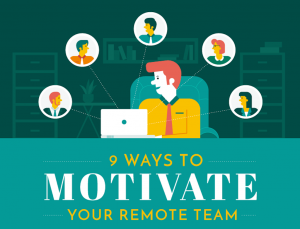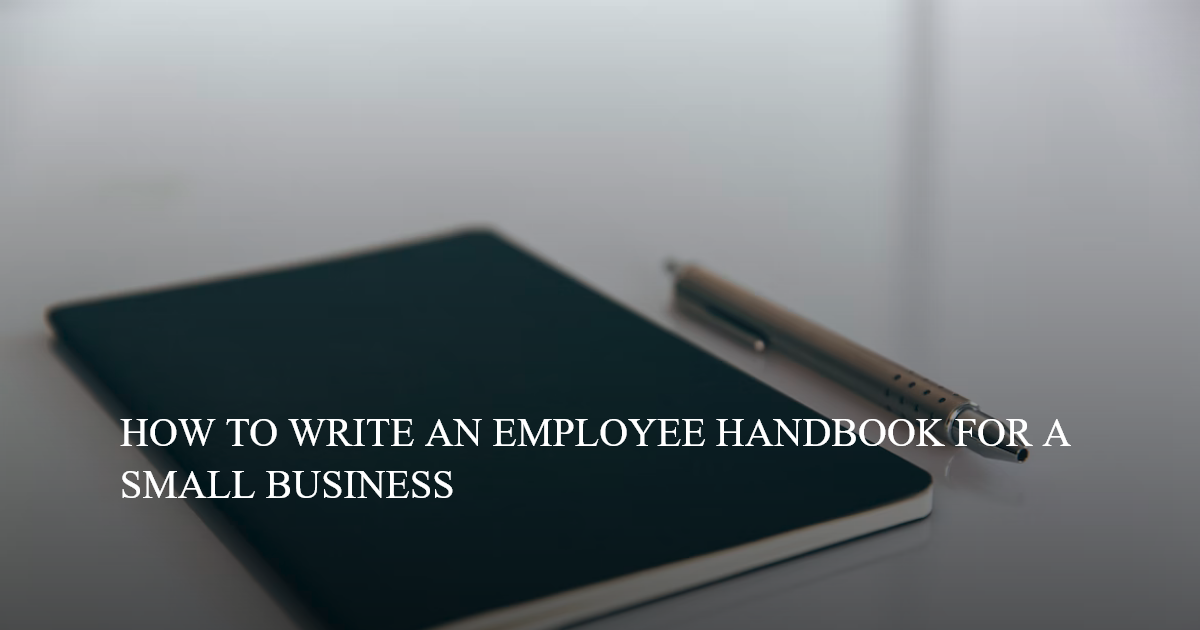Summary. Many employees moonlight, which means working a part-time job in addition to their regular job. While this can be beneficial for both employers and employees, it can also hinder employees’ performance in their work for your organization or create a conflict of interest. To avoid these downsides, it’s important to write a clear moonlighting policy that prevents this.
We live in the era of the side hustle, which means that many – if not most – employees are finding ways to earn money outside of their regular jobs. While this isn’t necessarily a problem, it can get tricky for employers who (understandably) want the best from their employees, so writing a moonlighting policy is almost always a good idea.
In this article, you’ll learn what moonlighting is, its pros and cons, and why and how you should write a moonlighting policy.
Key Takeaways:
-
Moonlighting is working a second job, usually part-time.
-
Moonlighting can increase employee fulfillment and skills.
-
Moonlighting policies protect companies and employees from conflicts of interest and lowered productivity.
What Is Moonlighting?
Moonlighting is when employees have a second job in addition to their primary job with your company. Often these jobs are part-time or seasonal, which allows employees to work after hours and on the weekend.
Some examples of moonlighting jobs include:
-
Working retail.
-
Delivering packages.
-
Driving for ride-hailing or food delivery apps.
-
Running a side hustle such as selling crafts or mowing lawns.
-
Working at a restaurant, bar, or coffee shop.
-
Coaching a sports team (for pay).
-
Freelancing or contract work.
-
Remote, part-time jobs.
-
Running or working at a family business.
Upsides to Employee Moonlighting
Allowing employees to work second jobs or run their own side hustles can actually benefit you as an employer in a few ways:
-
Expanded skill sets. Your workers will learn new skills when they moonlight, which can be a huge benefit to your organization.
-
More fulfilled employees. When employees can do something they’re passionate about during their hours off the clock, they’re more likely to feel fulfilled. This carries into their work and makes them more content, productive, and engaged employees.
-
Better paid employees. Many employees moonlight because they want or need extra cash. If they’re able to do this without negatively impacting their work for your company, you get to reap the benefits of higher-paid employees without having to be the one to pay them.
-
More engagement in the community. Having employees who are engaging with their communities through more than just your organization can be a big boost for your overall branding.
Downsides to Employee Moonlighting
If left unchecked, moonlighting employees may harm your team or organization in several ways:
-
Conflicting hours. The employee’s second employer may ask them to work the same hours you do, creating scheduling problems and leaving one of you shorthanded.
-
Conflict of interest. Employees may be working two jobs that create a conflict of interest, which can cause legal problems for all involved and/or result in benefiting a competitor.
-
Unfocused work. Some employees may be tempted to work on tasks for their second job while they’re on the clock working for you. This is not only a misuse of company time, but it also damages the team’s overall productivity.
-
Exhaustion. Working two jobs often wears employees out, hurting their performance at both places of employment.
-
Misusing company resources. It’s easy for employees to blur lines and use your company equipment or supplies for their side hustles. This can even be applied to intellectual property, such as processes or techniques.
Why You Should Have a Moonlighting Policy for Employees
Having a moonlighting employee policy allows you to set expectations for employees, enforce company policies, and protect your company and employees from legal trouble.
-
It sets expectations for moonlighting employees. If your employees don’t know what their limitations are for having a side hustle or taking a second job, they can’t respect them. Having a moonlighting policy in place helps remove any confusion and sets clear expectations.
-
It allows you to enforce expectations. Having a clear policy in place allows you to take action when an employee’s moonlighting is harming your organization. Otherwise, your options are very limited since you didn’t explain what the rules were.
-
It protects your company from legal trouble. If you fire someone for allowing their second job to interfere with their primary job but don’t have any policy in place explaining that that isn’t allowed, you’re far less protected from a wrongful termination lawsuit than you would be if you’d had that policy in place.
-
It protects your employees from legal trouble. Employees may not see how their moonlighting job creates a conflict of interest or violates their noncompete agreement, so having clear policies in place helps them avoid accidentally getting themselves into these situations.
This is especially true if you include clauses that require them to get permission from their employer to take a second job.
How to Create a Moonlighting Policy
If you decide to create a moonlighting policy, here are the steps you should follow:
-
Consider the type of work your employees do. Some types of work are more conducive to moonlighting than others. For example, if your employees are engineers who handle highly sensitive technical information, you’ll probably want a strict moonlighting policy.
On the other hand, if your employees are mostly part-time teachers, you’ll want to have a much more flexible and lenient moonlighting policy in place.
-
Talk to your HR and/or legal departments. These professionals will help you make sure your moonlighting policy is protecting the company as it should and isn’t creating any legal pitfalls.
-
Have your managers or department heads look it over. Getting several sets of eyes on the moonlighting policy will help you find any blind spots or considerations you may have missed.
-
Communicate the policy clearly. Company policies do no good if no one knows what they are. When you create a moonlighting policy, notify your current and future employees, encouraging them to ask questions about it if they need clarification.
What to Include in Your Moonlighting Policy
When you create a moonlighting policy, there are several major points that many companies include:
-
Conflicts of interest. Including language that prohibits employees from moonlighting for competitors is important for moonlighting policies. In addition, many organizations prohibit their employees from using any of their primary employer’s proprietary information or intellectual property at their second job.
This section could read something like this:
Conflict of Interest (Example Moonlighting Policy Clause)
“No employee shall be permitted to engage their talents or time – paid or unpaid – with a firm that competes with ACME, Inc. No employee shall be permitted to disclose any information about ACME, Inc.’s policies, procedures, techniques, programs, or other information to another organization, whether considered a competitor or not.”
-
Interfering with their primary work. It’s usually a good idea to include language in your moonlighting policy, especially about how the employee’s work for you should come first.
This includes both prioritizing their schedule with you and making sure they’re able to do all of their work in a satisfactory manner (i.e., they aren’t too tired or distracted to do their jobs).
Here’s an example of how this may read:
Interfering with Work (Example Moonlighting Policy Clause)
“Employees are permitted to work a second job only if it does not impact or hinder their duties or working their scheduled hours for ACME, Inc. Outside of breaks, and working hours should only be used to conduct work assigned by ACME, Inc.”
-
Getting permission to take a second job. While it usually isn’t a good idea to prohibit employees from moonlighting, many companies do require workers to get permission to do so. This allows companies to make sure there aren’t any conflicts of interest taking place.
If you choose to include this clause in your moonlighting policy, just make sure you treat all employees and their requests equally.
Here’s what this section of your policy may look like:
Obtaining Permission to Moonlight (Example Moonlighting Policy Clause)
“Employees shall obtain permission from their supervisors before taking a second job.”
Or,
“Employees must obtain written permission from ACME, Inc.’s HR department before taking a part-time position with any of ACME, Inc.’s suppliers, dealers, or clients. Failure to do so may result in immediate termination.”
In addition to these three elements, some companies like to include even more specific clauses in their moonlighting policies:
-
Prohibition of using employer resources for a second job.
-
Prohibition of creating intellectual property for another organization.
-
Prohibition of taking a job that is too demanding.
Moonlighting Policy FAQ
-
Is moonlighting allowed in the U.S.?
Yes, moonlighting is allowed in the U.S. Unless employees sign noncompete agreements or exclusivity contracts, it’s perfectly legal for them to work two jobs. However, some companies don’t like this, especially if it causes the employee to perform poorly or miss shifts.
-
Can moonlighting get you fired?
Yes, moonlighting can get you fired. Companies can fire you if having a second job interferes with your work performance or creates a conflict of interest.
However, most companies can’t and won’t fire you for having a second job if it doesn’t negatively impact your work with them. Some states even have legislation specifically protecting workers’ right to work other jobs during their off hours.
-
What does moonlighting mean?
Moonlighting means working a job in addition to your primary job. For example, many people work part-time jobs, do freelance work, or have side hustles outside of their regular full-time jobs.
-
What are the benefits of moonlighting?
The benefits of moonlighting include the following:
-
Expanded employee skill sets.
-
More fulfilled employees.
-
Better paid employees.
-
More engagement in the community.
-
References
- Workplace Policies
- How To Make An Equipment Policy
- Employee Break Laws
- Business Process Management
- Diversity in the Workplace
- Federal Holidays 2023
- Cell Phone Policy
- Attendance Policy
- Dress Code Policy
- Writing a Code of Conduct
- Company Mission Examples
- Putting Values Into Action
- Workplace Etiquette
- How to Reward Employees
- Employee Handbook
- Alternatives To All-hands Meetings
- Workplace Diversity
- Diversity Vs. Inclusion
- How To Outsource HR
- Strategic Planning
- Guide to Remuneration
- Bereavement Leave At Work
- How To Make A Sabbatical Policy
- How To Make A Moonlighting Policy
- How To Make An Open Door Policy
- How To Make A Human Resources Strategy
- How To Make A Vacation Policy
- How To Make A Remote Work Policy
- How To Create A Compensation Plan
- How To Organize Your Desk
- What Is Business Sustainability?
- How To Handle Proprietary Information
- Pets In The Office Policy
- How To Write A Social Media Policy
- How To Write Company Bylaws
- What Is VTO?
- Flexible Work Schedules





